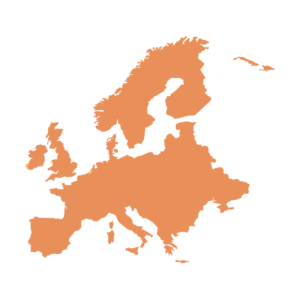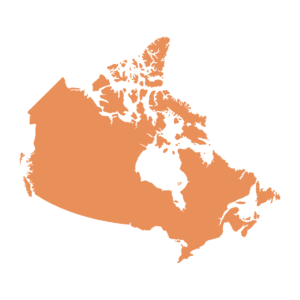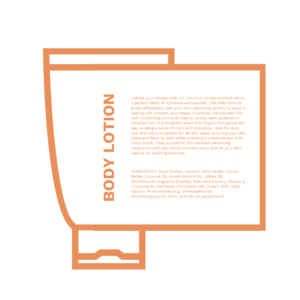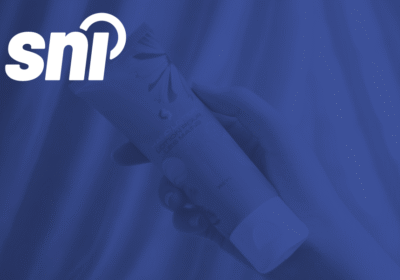 The world of beauty knows no borders, but, unfortunately, regulations certainly do. If you’re looking to import cosmetics from Europe to Canada, you’ll need more than just a great product, you will need a base level understanding of the rules on both sides of the Atlantic. The European Union (EU) and Canada have distinct regulatory frameworks, and ensuring compliance with both is key to avoiding delays, fines, or worse, having your products pulled from shelves.
The world of beauty knows no borders, but, unfortunately, regulations certainly do. If you’re looking to import cosmetics from Europe to Canada, you’ll need more than just a great product, you will need a base level understanding of the rules on both sides of the Atlantic. The European Union (EU) and Canada have distinct regulatory frameworks, and ensuring compliance with both is key to avoiding delays, fines, or worse, having your products pulled from shelves.
In this post, we will overview EU and Canadian cosmetic regulations, highlight the biggest differences, and walk you through the import process step by step. We will also cover critical considerations to ensure your products meet Canadian standards. Whether you’re an established brand expanding into a new market, or an ambitious startup looking to bring European beauty to Canadian consumers, this guide will help you navigate the process with confidence.
Overview of Cosmetic Regulations in the European Union (EU)
 The European Union (EU) regulates the cosmetics market through Regulation (EC) No 1223/2009, ensuring product safety, transparency, and compliance. This regulation applies to all manufacturers, importers, distributors, and retailers within the EU and outlines requirements such as ingredient restrictions, safety testing, and the maintenance of a Product Information File (PIF). The PIF documents key product details, including safety assessments, formulation data, and stability information, and must remain updated throughout the product’s market lifespan. Additionally, each cosmetic product must have an appointed Responsible Person (RP) based in the EU, who ensures regulatory compliance, oversees labelling, monitors adverse reactions, and submits notifications via the Cosmetic Product Notification Portal (CPNP).
The European Union (EU) regulates the cosmetics market through Regulation (EC) No 1223/2009, ensuring product safety, transparency, and compliance. This regulation applies to all manufacturers, importers, distributors, and retailers within the EU and outlines requirements such as ingredient restrictions, safety testing, and the maintenance of a Product Information File (PIF). The PIF documents key product details, including safety assessments, formulation data, and stability information, and must remain updated throughout the product’s market lifespan. Additionally, each cosmetic product must have an appointed Responsible Person (RP) based in the EU, who ensures regulatory compliance, oversees labelling, monitors adverse reactions, and submits notifications via the Cosmetic Product Notification Portal (CPNP).
The EU enforces stringent labelling requirements, mandating that cosmetic labels include the brand name, product function, full ingredient list in INCI nomenclature, net quantity, and a “best before” date for products with a stability of less than 30 months. Safety warnings and usage instructions must be clearly visible to consumers. The regulation also bans certain substances, such as heavy metals, and restricts others like preservatives and CMR-classified ingredients (Carcinogenic, Mutagenic, or Reprotoxic). Nanomaterials require pre-market notification, and cosmetics must not claim medicinal benefits to avoid classification under pharmaceutical regulations.
A significant milestone in EU cosmetics regulation is the complete ban on animal testing, implemented in 2009 and expanded in 2013. This prohibition extends to both finished products and ingredients, reinforcing the EU’s commitment to ethical beauty and influencing global industry standards. Compliance is upheld through monitoring systems coordinated by the European Chemicals Agency (ECHA), which conducts inspections and collaborates with member states to enforce regulations like REACH and Persistent Organic Pollutants (POP). Recent enforcement efforts found that 6.4% of inspected cosmetics were non-compliant, largely due to hazardous chemicals. Non-compliance can result in significant financial penalties, product recalls, and market bans.
 Sustainability and eco-design are increasingly shaping EU regulations, driven by initiatives such as the Green Pact for Europe. The European Commission emphasizes resource efficiency and ethical sourcing, incorporating the Nagoya Protocol to preserve biodiversity. New rules under the Ecodesign for Sustainable Products Regulation (ESPR) introduce standardized disclosures via the Digital Product Passport (DPP), requiring companies to report data on substances of concern (SoC), environmental footprints, and product sustainability. Manufacturers must also track unsold products and disposal reasons to enhance accountability and waste reduction. The first working plan, due in April 2025, will establish further priorities to advance sustainability and innovation in the cosmetics industry.
Sustainability and eco-design are increasingly shaping EU regulations, driven by initiatives such as the Green Pact for Europe. The European Commission emphasizes resource efficiency and ethical sourcing, incorporating the Nagoya Protocol to preserve biodiversity. New rules under the Ecodesign for Sustainable Products Regulation (ESPR) introduce standardized disclosures via the Digital Product Passport (DPP), requiring companies to report data on substances of concern (SoC), environmental footprints, and product sustainability. Manufacturers must also track unsold products and disposal reasons to enhance accountability and waste reduction. The first working plan, due in April 2025, will establish further priorities to advance sustainability and innovation in the cosmetics industry.
Overview of Cosmetic Regulations in Canada
 Canadian laws prioritize consumer safety, transparent labelling, and full ingredient disclosure, establishing a clear regulatory framework for manufacturers and retailers. Several federal acts govern cosmetic products, including the Food and Drugs Act, Cosmetic Regulations, Consumer Packaging and Labelling Act, and Hazardous Products Act. These regulations ensure that cosmetics are manufactured, packaged, and stored safely to prevent potential risks to consumers. A key requirement is bilingual labelling, with all essential information provided in both French and English. The label must include the product’s identity (name or description), net quantity (amount in metric units), the manufacturer or distributor’s name and contact details, a full list of ingredients in descending order of concentration (with proper INCI names), directions for use, warnings or precautions, and the expiry date if the product has a shelf life of 30 months or less. Additionally, allergenic ingredients, particularly those in rinse-off products above 0.01%, must be explicitly listed on the label.
Canadian laws prioritize consumer safety, transparent labelling, and full ingredient disclosure, establishing a clear regulatory framework for manufacturers and retailers. Several federal acts govern cosmetic products, including the Food and Drugs Act, Cosmetic Regulations, Consumer Packaging and Labelling Act, and Hazardous Products Act. These regulations ensure that cosmetics are manufactured, packaged, and stored safely to prevent potential risks to consumers. A key requirement is bilingual labelling, with all essential information provided in both French and English. The label must include the product’s identity (name or description), net quantity (amount in metric units), the manufacturer or distributor’s name and contact details, a full list of ingredients in descending order of concentration (with proper INCI names), directions for use, warnings or precautions, and the expiry date if the product has a shelf life of 30 months or less. Additionally, allergenic ingredients, particularly those in rinse-off products above 0.01%, must be explicitly listed on the label.
A fundamental compliance step is submitting a Cosmetic Notification Form (CNF) to Health Canada within 10 days of the product’s initial sale or reformulation. This notification must include the product’s identity and purpose, a complete ingredient list with concentrations, and details about the manufacturer or distributor. While Canada does not require pre-market approval for cosmetics, companies are legally obligated to submit CNFs and ensure compliance with safety standards. Canada follows a notification-based system that places compliance responsibility on manufacturers.

Another key regulatory aspect is animal testing. Canada introduced a ban on cosmetic animal testing, which took effect in December 2023. This ban still allows for some exceptions, particularly in cases where historical safety data relies on animal testing.
Additionally, Canadian regulations require strict adherence to ingredient restrictions and prohibitions. Canada maintains its own Hotlist, which details ingredients that are prohibited or require specific usage conditions in cosmetics. Manufacturers must ensure their formulations comply with this list to avoid regulatory complications.
As sustainability becomes a greater focus, Canada is also taking steps to improve environmental standards in cosmetics, with increasing emphasis on waste reduction, sustainable sourcing, and ingredient transparency. Regulatory changes in the coming years may push Canada toward stricter sustainability standards.
Regulations – Compare and Contrast
| Regulation Aspect | Canada | European Union (EU) |
| Regulatory Framework | Governed by the Food and Drugs Act, Cosmetic Regulations, Consumer Packaging and Labelling Act, and Hazardous Products Act. | Governed by Regulation (EC) No 1223/2009. |
| Notification Requirement | Cosmetic Notification Form (CNF) must be submitted to Health Canada within 10 days of initial sale or reformulation. | Cosmetic Product Notification Portal (CPNP) notification required for all products before placing on the market. |
| Labelling Requirements | Bilingual labelling (English and French) is required, with the product identity, net quantity, ingredient list (INCI names), usage instructions, expiry date (if applicable), allergen disclosure, and safety warnings. | Must include brand name, product function, full ingredient list (INCI names), net quantity, best before date (for products with less than 30 months stability), safety warnings, and usage instructions. |
| Responsible Person | No specific requirement for a designated responsible person. | A Responsible Person (RP) must be appointed and based in the EU to oversee compliance, including regulatory reporting, labelling, and adverse reactions. |
| Ingredient Restrictions | Canada’s Hotlist details ingredients that are banned or restricted in cosmetics. | Bans certain substances (e.g., heavy metals), restricts preservatives and CMR-classified ingredients (Carcinogenic, Mutagenic, or Reprotoxic), and requires pre-market notification for nanomaterials. |
| Animal Testing | Canada banned animal testing for cosmetics in December 2023, with some exceptions for historical safety data. | A full ban on animal testing for both finished products and ingredients has been in place since 2009. |
| Product Safety Testing | No pre-market approval is required, but compliance with safety standards is mandatory. | A Product Information File (PIF) must be maintained for each product, including safety assessments, formulation data, and stability information. |
| Sustainability Requirements | Canada has increasing emphasis on sustainability, but regulations are not as strict as in the EU. | The EU places a strong emphasis on sustainability, with regulations like the Green Deal, Ecodesign for Sustainable Products Regulation (ESPR), and Digital Product Passport (DPP) that require companies to disclose product sustainability and environmental impact. |
| Market Surveillance and Compliance | Health Canada monitors compliance through inspections and penalties, with a focus on safety and ingredient compliance. | The European Chemicals Agency (ECHA) conducts inspections and enforces compliance; non-compliance can result in financial penalties, product recalls, or market bans. |
| Sustainability & Eco-design | Canada is increasingly focused on waste reduction, sustainable sourcing, and ingredient transparency. | The EU has a comprehensive focus on eco-design, including resource efficiency, ethical sourcing, and the introduction of Digital Product Passports to track environmental footprints and substances of concern. |
| Pre-market Approval | Not required. Compliance is ensured through submission of the Cosmetic Notification Form (CNF). | Not required, but the Product Information File (PIF) must be maintained throughout the product’s market life and updated when necessary. |
Importing Cosmetics from Europe to Canada
 Navigating the process of importing cosmetics from Europe to Canada requires adherence to Canadian regulations to ensure the product is market-ready and legally distributed. It may be beneficial to work with a regulatory consultant to ensure all cosmetic requirements are met before the product’s importation.
Navigating the process of importing cosmetics from Europe to Canada requires adherence to Canadian regulations to ensure the product is market-ready and legally distributed. It may be beneficial to work with a regulatory consultant to ensure all cosmetic requirements are met before the product’s importation.
Need expert support? Connect with the SNI team to ensure your products are fully compliant and market-ready. Our regulatory experts will guide you through the process, from label compliance to seamless Cosmetic Notifications, ensuring everything is completed accurately and efficiently for smooth market entry.
While site licensing is not required for importing cosmetics into Canada, it’s crucial to establish a proper traceability framework for products entering the country. Importers are responsible for ensuring their products comply with Canadian regulations and must maintain detailed import records. Additionally, having a well-organized recall system in place is essential to efficiently address any potential risks that may arise with the products. Here’s an overview of the steps to complete before and after importation to help you navigate this complex process successfully:
1. Understand Canadian Import Requirements
To legally import cosmetics into Canada, all products must meet the requirements outlined in the Food and Drugs Act and Cosmetic Regulations. These regulations ensure that cosmetics are safe and do not pose any risk to human health. CBSA (Canada Border Services Agency) customs officers have the authority to detain products at the port of entry if they believe the products are not compliant with Canadian regulations. Ensure that the cosmetics are manufactured, stored, and packaged under sanitary conditions, as required by Canadian regulations. This includes maintaining cleanliness throughout the production process and preventing contamination.
2. Comply with Ingredient Restrictions
 Canada has strict regulations regarding certain ingredients, similar to the European Union. There are specific substances that are either prohibited or restricted due to safety concerns. It’s crucial to consult Health Canada’s list of prohibited and restricted substances to ensure that your products comply with Canadian standards and are safe for consumers. Review Health Canada’s Cosmetic Ingredient Hotlist, which provides detailed information about ingredients that are either restricted or banned for use in cosmetics. Make sure all ingredients used in your product formulations align with these guidelines to avoid delays or issues with product approval.
Canada has strict regulations regarding certain ingredients, similar to the European Union. There are specific substances that are either prohibited or restricted due to safety concerns. It’s crucial to consult Health Canada’s list of prohibited and restricted substances to ensure that your products comply with Canadian standards and are safe for consumers. Review Health Canada’s Cosmetic Ingredient Hotlist, which provides detailed information about ingredients that are either restricted or banned for use in cosmetics. Make sure all ingredients used in your product formulations align with these guidelines to avoid delays or issues with product approval.
3. Prepare Necessary Documentation
Importers must maintain detailed records that can help identify potential risks and ensure effective product recalls if necessary. Manufacturers or importers are required to submit a CNF to Health Canada to inform them of a product entering the market. After submission, Health Canada will issue a unique Cosmetic Number for each notified product. This number must be included in shipments to improve product transparency and facilitate identification upon arrival. When submitting the CNF, it is crucial to provide a detailed list of ingredients, including their exact concentrations or appropriate ranges. Providing this information helps expedite the approval process and allows Health Canada to assess your product more efficiently.
4. Ensure Proper Labelling and Notification
 Unless the cosmetic notification has already been submitted before import, all cosmetic products must be notified to Health Canada through the online CNF portal within 10 days of market entry. We advise to submit notifications in advance, as Health Canada may require product reviews, which could result in requests for reformulation or relabelling. Proper labelling is essential, including a detailed ingredient list in both English and French, as required by federal regulations. This ensures compliance and provides Canadian consumers with transparent and accessible product information. Ensure that all labelling complies with Canadian bilingual requirements, including the product’s identity, net quantity declaration, and the manufacturer’s or distributor’s name and address. Clear and accurate bilingual labelling helps meet consumer expectations and avoids delays at customs.
Unless the cosmetic notification has already been submitted before import, all cosmetic products must be notified to Health Canada through the online CNF portal within 10 days of market entry. We advise to submit notifications in advance, as Health Canada may require product reviews, which could result in requests for reformulation or relabelling. Proper labelling is essential, including a detailed ingredient list in both English and French, as required by federal regulations. This ensures compliance and provides Canadian consumers with transparent and accessible product information. Ensure that all labelling complies with Canadian bilingual requirements, including the product’s identity, net quantity declaration, and the manufacturer’s or distributor’s name and address. Clear and accurate bilingual labelling helps meet consumer expectations and avoids delays at customs.
5. Work with a Canadian Representative
Having a designated Canadian representative can simplify communication with Health Canada and make the regulatory process more efficient. This is especially important for foreign manufacturers, as it ensures compliance with local regulations and smooths the path for market entry. Your Canadian representative should be well-versed in Canadian cosmetic regulations and capable of acting as a liaison between your company and Health Canada. This relationship can help address regulatory concerns promptly and facilitate the import process.
6. Maintain Proper Records and Review Product Specifications
 Manufacturers need to ensure their products meet the necessary standards before shipping, while Canadian importers must verify that products comply with regulations, adhere to GMPs, and review testing results to confirm safety, including limits on heavy metals and microbes. Importers must also provide safety evidence if requested and may find it helpful to appoint a Canadian agent to assist with regulatory communication. Additionally, importers are required to maintain records, establish a recall system, and ensure their products meet all relevant safety and regulatory standards.
Manufacturers need to ensure their products meet the necessary standards before shipping, while Canadian importers must verify that products comply with regulations, adhere to GMPs, and review testing results to confirm safety, including limits on heavy metals and microbes. Importers must also provide safety evidence if requested and may find it helpful to appoint a Canadian agent to assist with regulatory communication. Additionally, importers are required to maintain records, establish a recall system, and ensure their products meet all relevant safety and regulatory standards.
Final Remarks
Importing cosmetics from Europe to Canada is a detailed process that requires an understanding of both Canadian and European regulations to ensure compliance and smooth market entry. From ensuring that your products meet safety standards to navigating labelling requirements, it’s essential to carefully follow the regulatory steps outlined by Health Canada.
Canadian importers play a vital role in verifying product safety, adhering to ingredient restrictions, and maintaining clear documentation. By working with a Canadian representative and keeping detailed records, importers can manage compliance more effectively and ensure that their products are safely distributed to Canadian consumers.
Regulatory Support
Ensure seamless compliance when importing your cosmetics into Canada! Connect with our experts for personalized guidance and unlock your brand’s full potential.
💡 Book a discovery call today to streamline the process and succeed in the Canadian market!




